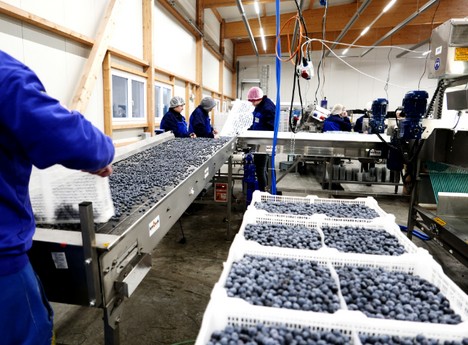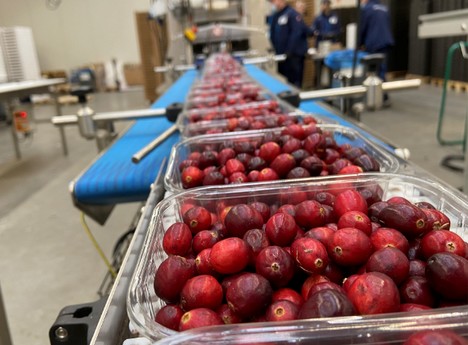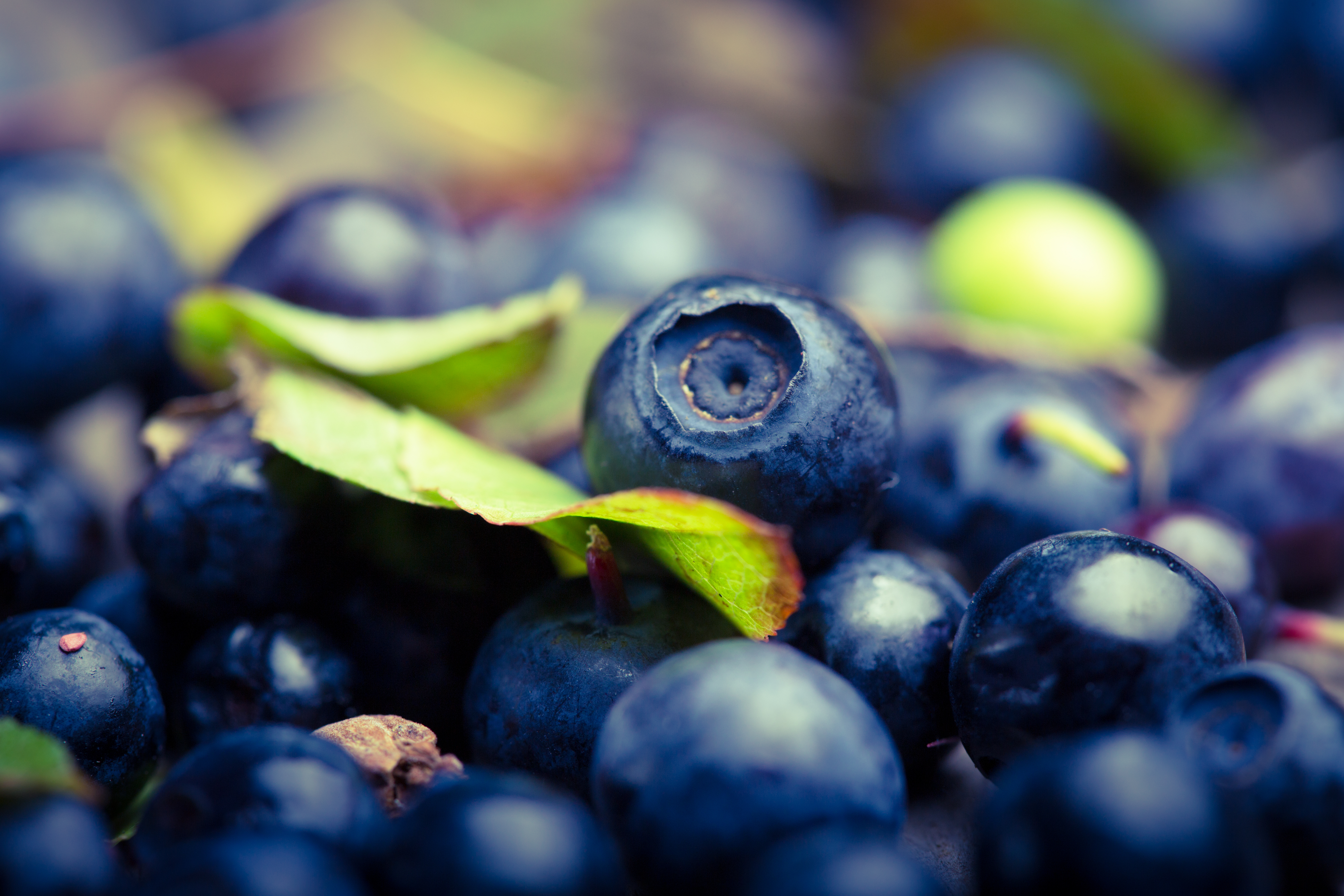Strong marketing year for German cultivated blueberries
While German blueberries disappeared from the market some three weeks ago, overseas goods now dominate the scene. At Nordgemüse Krogmann LLC in Buchholz, berries from overseas are central stage as well now. Despite the Corona situation, the company can look back on a strong marketing year for North German blueberries, says Managing Director Christiaan Koellreuter.

In early September, the last blueberries from the Lüneburger Heide arrived at the huge logistics site of Nordgemüse Krogmann. This meant that the season ended a little earlier than usual, says Koellreuter.
“Due to the shortage of workers caused by Corona and due to considerable frost damage, regional blueberry yields were 40 percent below the average level. This of course meant that the volumes for the market were quite a bit smaller than usual.”
Meanwhile, the food retailer had seen a considerable increase in demand. “Because of its positive effect on the immune system, the blueberry received much praise, especially in these times of Corona. This boosted sales even more.”
Nevertheless, according to Koellreuter, the effect of the Corona crisis should not be overestimated, “[…] because blueberries are increasingly developing into an all-year-round product, which is in great demand in the trade. In view of the shortage of goods, I believe we would have had a strong marketing year even without Corona.”
Quiet marketing phase in autumn
At present, the marketing of blueberries is proceeding rather smoothly, says Koellreuter. Outside the domestic season there are fewer special offers in the retail trade, with packaging sizes of 200 and 300 gram trays rather than 500 gram trays.
“Peru currently dominates the range, with South Africa supplementing. Argentina is having a good harvest, but the difficult air freight situation makes it difficult to transport the goods to Europe. In terms of demand, it will remain rather quiet until Christmas. From January onwards, soft fruits will usually come to the fore again, with Chilean blueberries and Spanish strawberries front and center.”
German cranberries: Successful niche in the retail sector
In contrast to blueberries, the marketing of cranberries is currently in full swing. “Between weeks 40 and 44, we are able to offer the trade a continuous supply of fresh products from the Lüneburg Heath. The product is particularly demanding, but our main supplier has the cultivation side well under control.”

The product also meets with a positive response in the food retail trade. “Firstly because it is grown regionally and sorted, packed and delivered within a very short time, and secondly because the cranberries have a very good shelf life. Directly after the domestic campaign, Canadian cranberries will be offered for another 4-5 weeks,” the company spokesperson continues.
Berry mix: Popular concept in retail
Last year, Nordgemüse also launched a new berry mix, consisting of peeled physalis from its own production sites for the first time. “The physalis has been able to establish itself primarily as a single product and is now only offered in the form. However, the berry mix – which is also sold as ultra-fresh – continues to enjoy increasing popularity in the trade.”
15/10/2020







